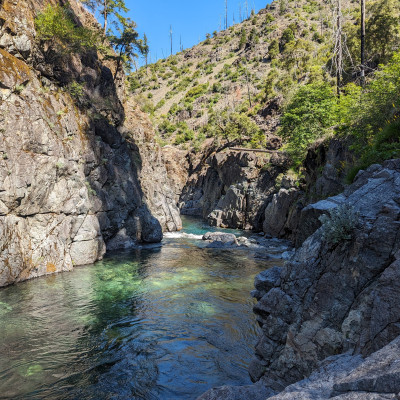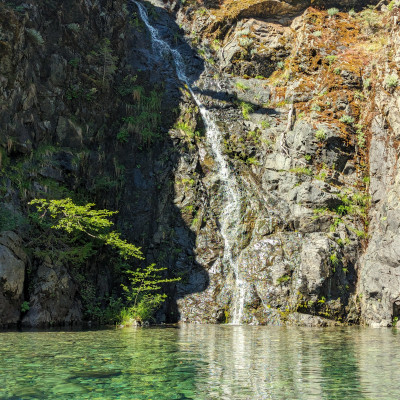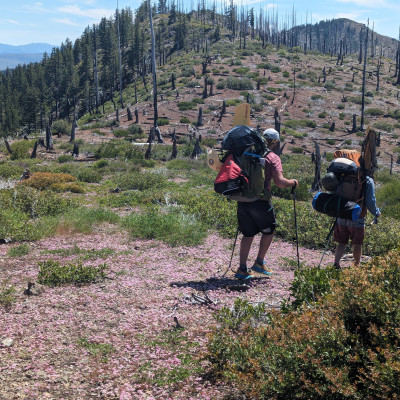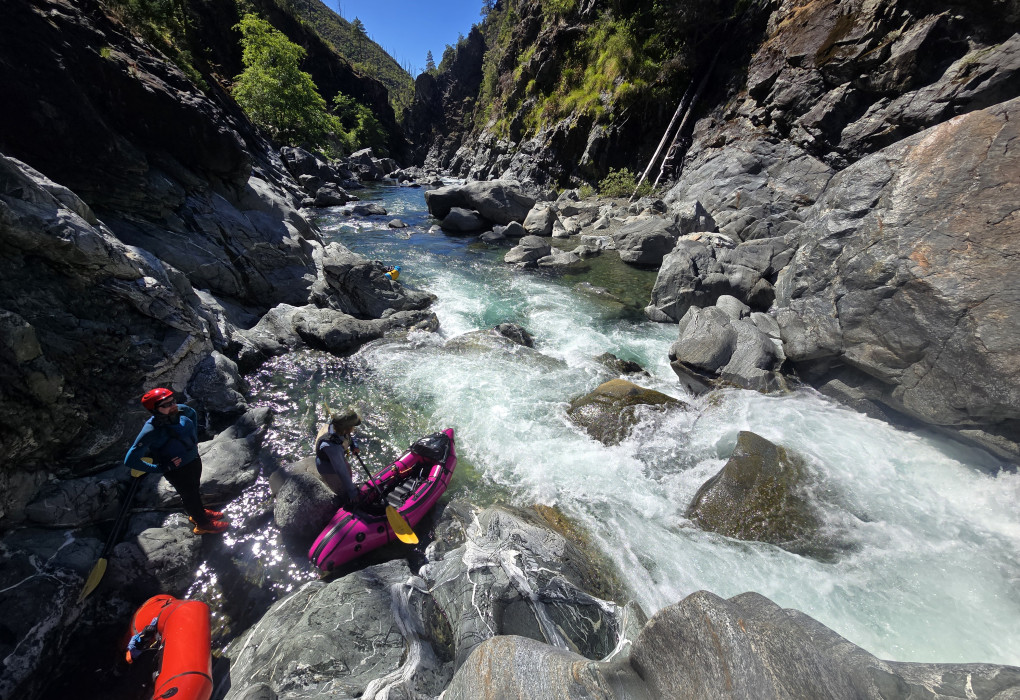StEELhead Discoveries Series - Part 11: July 2024
*This is Part 11 of an ongoing series on the campaign to Free the Eel and efforts to better understand and revive the iconic steelhead in the Pacific Northwest by Native Fish Society Fellow Samantha Kannry. View all parts of the series HERE. Additional parts and updates will be posted over the next several months. Stay tuned!
~ ~ ~ ~ ~ ~
"The Chetco River in southwestern Oregon flows crystal clear through the Kalmiopsis Wilderness. Its unique geology and climate result in the striking emerald-hued water that is such a pleasure for thirsty eyes. It is also home to a relatively healthy native O. mykiss and Coastal Cutthroat Trout population. As such, we have been planning for a few years to dip our nets in its striking waters and see what the genetics of its native fish have to tell us. When the time came earlier this month to make our Chetco dream a reality, I found myself still not fully healed from an injury I have been nursing. So, with a little sad, but mostly joyful heart, and a commitment to take care of the farm and the data analysis, I sent my field partner off with two companions and a hearty breakfast to see what the Upper Chetco would share with them.
Their story starts with a great shuttle driver to the Babyfoot Trailhead near Cave Junction. Packrafts, and associated gear, sampling supples, camping necessities and food for a few days, resulted in decently heavy packs for the steep hike down to the river. That part of the Kalmiopsis has burned at high severity, views abound, but the slopes have lost their shading, stabilizing component, at least temporarily.
Modern packraft designs have opened up worlds of possibilities for combining hiking (or biking) and waterbody crossing or river travel. Once their gear was neatly packed into the tubes, they began making their way downstream, dodging boulders, portaging a few rougher rapids, admiring the stunning canyon and catching fish. In the upper half of the 25 miles they rafted, they only encountered O. mykiss. Around the confluence with Tin Cup Creek, the gradient and roughs had mellowed slightly, and they began catching cutthroat as well. The tissue samples collected in the Chetco will help us complete the picture of O. mykiss and Coastal Cutthroat hybridization, and diversity and relatedness within the larger region.
They returned with massive grins and a general feeling of elatedness. They had encountered astounding pool visibility, numerous bears, enchanting campsites, paddling that tested their comfort levels, lots of speckled beauties, and a strong motivation to incorporate packrafting into fieldwork and life. The next potential packrafting/fieldwork mission is a deeper exploration of the fishes of the South Fork Trinity River. I plan to be fully healed by then."
-Samantha Kannry




Chetco River and trail | Photo credit: Dylan Keel & Trevor Kumec
~~~~~
About the Author:
Samantha Kannry has been monitoring, studying, and swimming with summer-run steelhead in the Eel River and other rivers of Northwestern California for the past thirteen years. She joined NFS as a volunteer in 2015, then became a fish genetics fellow in 2020.
While it has been clear to the native peoples of the region since time immemorial that summer-run steelhead and the congeneric spring Chinook are separate populations, not everyone else sees it so clearly. Her research has focused on using conservation genetic tools to elucidate the distinction between summer and winter-run steelhead.
When not minking (a combination of hiking, swimming, snorkeling, sliding, shimmying, and boulder jumping) down rivers, she is usually growing and eating fruit, moving manure at Caudal Fin Farm, or bike touring distances large and small. All working towards re-establishing the inherent continuity between rivers, land, and people.
Read StEELhead Discoveries Part 1 - 10 HERE.
